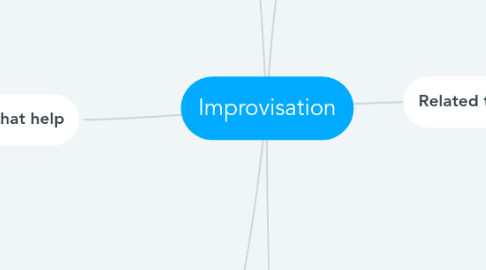
1. Techniques that help
1.1. Offers
1.1.1. When you say or do something that leads on a scene. Offers need to be clear, simple and brief. Others usually need to accept the offer when it is done or said.
1.2. Accepting
1.2.1. Accepting an offer will continue the scene, rejecting it will lead the scene and story to an ending.
1.3. Extending
1.3.1. This is a way of accepting the offer and broadening the scene, a way is saying : "Yes...And"
2. Techniques that help
2.1. Advancing
2.1.1. When you give out new information, "what comes next" you may introduce a new character or focus.
2.2. Yielding
2.2.1. When 2 people have different offers, one person has to then give up his/her offer, to make it one offer at a time.
2.3. Endowing
2.3.1. Act of assigning attributes to another performer’s character/things in a scene.
2.4. Physicalising
2.4.1. Acting a movement in a physical way, using objects in an environment can illustrate a setting
3. Techniques that hinder
3.1. Gagging
3.1.1. Joking, doing or verbally saying something funny that makes you the "main" character and pulling out focus from your players.
3.2. Wimping
3.2.1. Type of blocking, when you don't want to accept the offer, you may do it by asking questions or an over description with a lack of emotion.
4. Types of Improv
4.1. Spontaneous Improvisation: is unprepared and unrehearsed improv, try new things on the spot.
4.2. Rehearsed / Prepared : When the improv is carefully prepared and rehearsed and well known. Usually used in playbuilding.
5. Related terms
5.1. Focus: When the focus is on one or the main characters, it should be at one place at any time, if there is more than one thing happening, the focus is split.
5.2. Status: The hierarchy of someone, what their level is in improv.
6. Techniques that hinder
6.1. Blocking
6.1.1. When something is said to refuse or reject can block and end the conversation when improvising. Breaks down and steals the focus from another offer.
6.2. Side tracking
6.2.1. Changing the storyline for no reason either because of overloading or elements gagging.
6.3. Overloading
6.3.1. Throwing and adding unnecessary elements.
